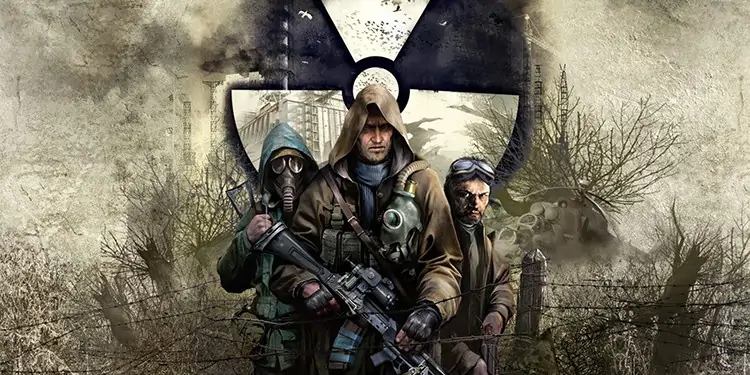There’s a single downside in the S.T.A.L.K.E.R. series: it’s too short. There’re only three main entries so far, and I feel like it’s not enough.
Perhaps you saw the trailer for the fourth entry, S.T.A.L.K.E.R 2: Heart of Chernobyl. It’s coming out in 2022 as an Xbox Series exclusive, and it looks great.
Before that, Ukrainian studio GSC Game World showcased video-game mastery. They successfully mixed RPG, action-adventure, survival, and FPS to deliver a story-driven survival horror shooter.
Let’s take a look at the Stalker series, and see what we’ve been missing.
The S.T.A.L.K.E.R. Series
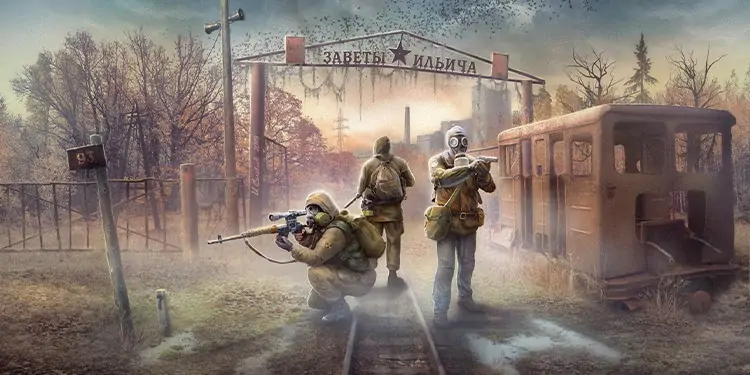
S.T.A.L.K.E.R. stands for “Scavengers, Trespassers, Adventurers, Loners, Killers, Explorers, and Robbers.” It’s an acronym that describes the tone and the setting of the series.
The setting is an alternate Chernobyl Exclusion Zone. The game’s story explains a second explosion after the real-life one.
The Ukrainian area was part of the U.S.S. According to game lore, several secret laboratories were conducting psionic abilities experiments in Chernobyl. It created a catastrophe in 2006 that caused a meteorological phenomenon and mutated the local animals and plants. The original historical explosion happened in 1986.
This area around the explosion is known as “The Zone.” It’s rich in weather anomalies, mutants, radioactivity, toxic wastes, and Stalkers.
See, these anomalies create “Artifacts,” items with unique psionic powers. The Stalkers explore the Zone, searching for the artifacts for personal glory and enrichment. Some work on their own, while others are members of rival factions.
On top of this, there’s the Duty faction and the Freedom faction. The former believe the Zone should be destroyed; the latter believe the Zone should be accessible to everyone. See, there’s a military perimeter around the Zone to keep mutants and humans with psionic powers in check.
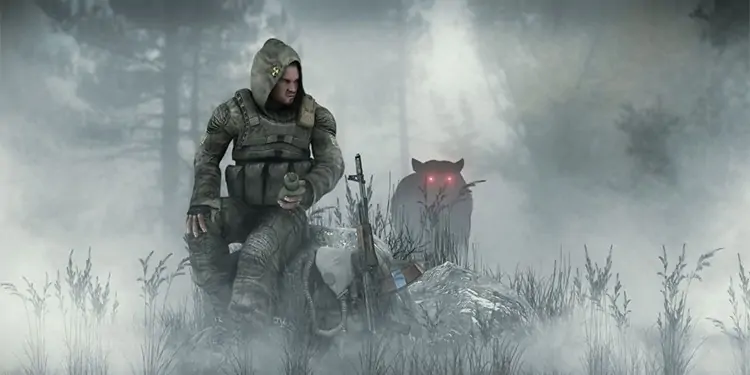
The setting opens up an FPS with scarce ammo and resources. Players need to manage an inventory with weapons, health kits, ammo, food, water, and other stats. If you’re familiar with the Metro games, we could say Stalker is its main competitor.
S.T.A.L.K.E.R. Game in Order
S.T.A.L.K.E.R.: Shadow of Chernobyl – 2007
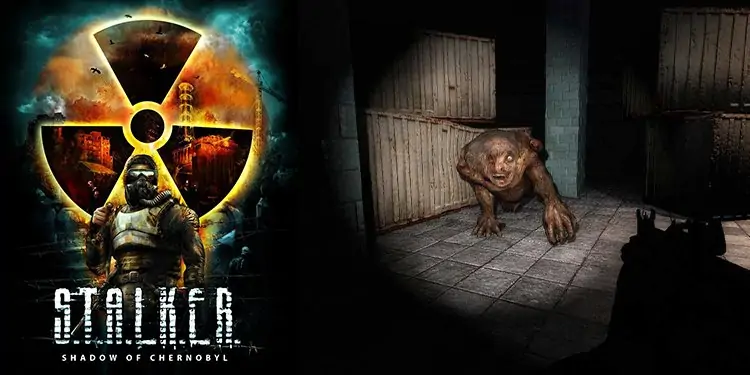
The first game introduces the Zone, a dangerous place only the Stalkers dear to explore. It debuted in 2007 for Windows.
The setting takes inspiration from two source materials. It picks from Arkady and Boris Strygatsky’s Roadside Picnic, as well as Andrei Tarkovsky’s film “Stalker.”
You play as the “Marked One,” a man who lost his memories. He wakes up with a message in his PDA, where he reads “Kill Strelok.” Unaware that he is Strelok, one of the most capable Stalkers alive, he begins a journey to find himself.
The map extends for 30 kilometers of ruins across Chernobyl and the Chernobyl Nuclear Plant. The developers also moved the city of Pripyat to the area, and it’s modeled to its real-life counterpart.
It’s not an open world, though. Instead, the game comes through semi-open map pockets tied together with loading screens.
The Marked One has an Anomaly Detector that beeps when it senses psionic energy to explore the area safely. Also, Strelok can gather artifacts that increase and decrease attributes.
However, even though it has RPG elements, conversation branches are limited. There’re also no consequences for your choices, aside from declining or accepting a mission.
Lastly, your mission spans radiation patches, mutants, raiders, dangerous anomalies, and NPCs.
S.T.A.L.K.E.R.: Clear Sky – 2008
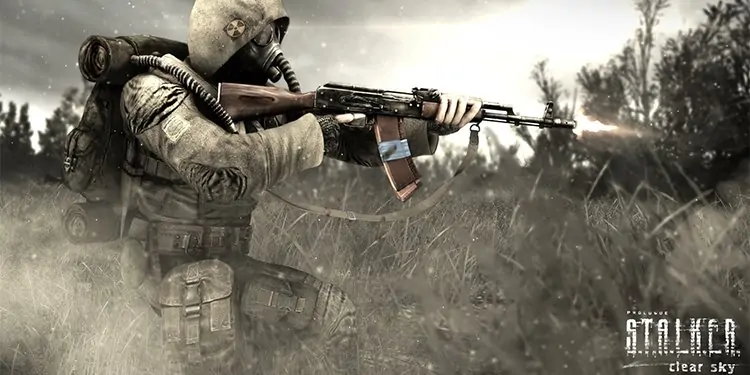
Clear sky debuted in 2008 for Windows as well. THQ stepped down as the publisher, and Deep silver stepped in. If you’re unfamiliar, Deep Silver is the developer of the Metro games.
The new protagonist is Scar, a mercenary looking to stop a group of Stalkers from reaching the Zone’s center. The center is home to the forbidden Chernobyl Nuclear Power Plant. Only Strelok has reached the area and lived to tell the tale.
Either way, the game uses much of the same locations as the last game while introducing new areas. Also, it adds the ability to customize weapons and armor. Lastly, it allows players to participate in faction wars.
The survival horror elements are still there as well. Ammo is scarce, frightening, and the mutants are amok.
For RPG elements, players have to manage inventory, pick up quests, manage armor types, and take care of defense stats.
As for the faction wars, players learn that factions fight for territory and power. Players can join any faction in battle and get specific gear and traders in return.
Then, as the story goes on, Scar discovers the ultimate goal is defeating Strelok. He can fight alone or become an ally to one of the four factions for the quest.
S.T.A.L.K.E.R.: Call of Pripyat – 2009
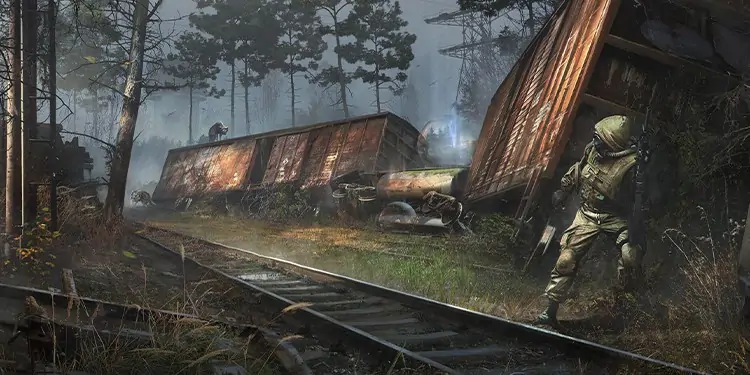
Call of Pripyat debuted in 2009 for Windows. It is the last in the series before its long hiatus.
The third entry takes place shortly after Clear Sky and Shadow of Chernobyl. There’s an open path to the Zone center, and the government decides to take control through its “Operation Fairway.” Moreover, the government plans to investigate the territory, therefore dispatching military force.
You play as Major Alexander Degtyarev, a stalker and an SBU agent. You travel to the Zone after the initial military operation failed. The goal is to search for the crash site of five helicopters.
This story opens up a new inside and around the nuclear plant. The ghost city of Pripyat is also the main scenario. As before, you play on semi-open pocket areas connected by loading screens.
The gameplay remains similar to before but adds a sleep system on top of hunger and thirst. Also, it adds other realistic shooter elements like weapon wear damage, limited economy, repair costs, and similar.
The trading system also changes compared to previous games. Notably, traders can sell key information as documents. On the same note, there’re weapon and armor upgrade tiers. Each branch requires a special toolkit.
Then, the most significant novelty is “emissions.” These are psionic anomalies that make the ground shake. The player gets a two-minute warning, and he must wind a predesigned shelter to survive the fallout.
Lastly, the game has a multiplayer PvP mode that supports 32 players max on multiple maps.
S.T.A.L.K.E.R. 2: Heart of Chernobyl – 2022
Heart of Chernobyl is the upcoming sequel for the S.T.A.L.K.E.R. trilogy. It’s debuting for Windows and Xbox Series in April 2022, and it will be available on Xbox Game Pass from day one (PC and console).
Initially, the developers wanted to release the game in 2012. However, they canceled the game a year before its release.
In 2018, the game came back to the surface under GSC Game World publishing. More importantly, the developers use the all-new Unreal Engine 5 for its graphics.
Every S.T.A.L.K.E.R. Game in Chronological Order
- S.T.A.L.K.E.R.: Shadow of Chernobyl – 2007
- S.T.A.L.K.E.R.: Clear Sky – 2008
- S.T.A.L.K.E.R.: Call of Pripyat – 2009
- S.T.A.L.K.E.R. 2: Heart of Chernobyl – 2022
Do I need to play S.T.A.L.K.E.R games in order?
You can play either game as a stand-alone experience. By reading my series’ description, or any other guide, you’ll have the information you need.
The three core games are interconnected as they live in the same confined space. That means they share plot points, stories, characters, and locations. However, the connections within these games are minimal.
If you don’t want to play them in order, experience the series following their default release dates.
Why is S.T.A.L.K.E.R 2 an Xbox Exclusive?
GSC Game World needed a long period to reorganize itself after Call of Pripyat.
After the studio decided to become the publisher, they found they couldn’t handle the marketing and development process.
Many years after the third S.T.A.L.K.E.R entry, Microsoft stepped in with a new deal. They bought the rights for the series to get it as an Xbox / Windows exclusive for three months. The period is according to documents gathered by The Verge.

